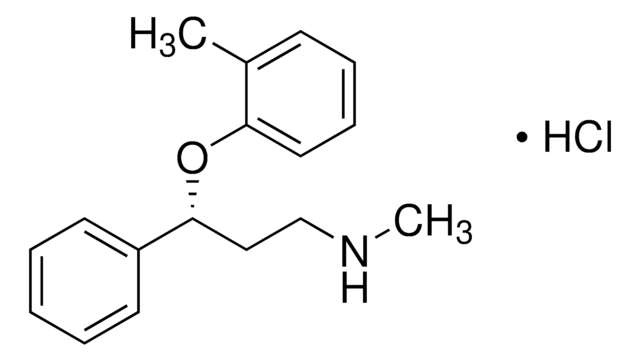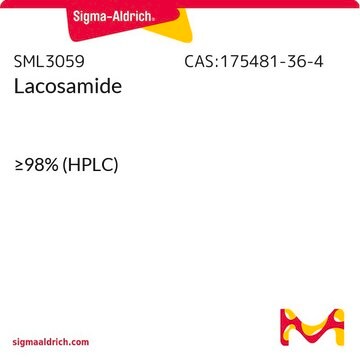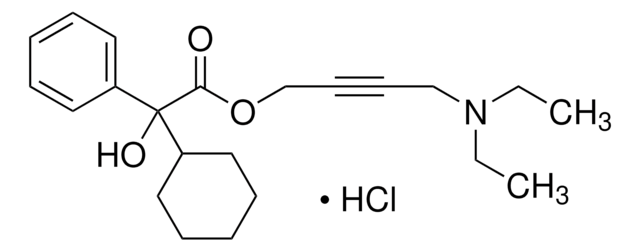T7947
(R)-Tomoxetine hydrochloride
solid
Sinonimo/i:
(R)-N-Methyl-γ-(2-methylphenoxy)benzenepropanamine hydrochloride, Atomoxetine hydrochloride
About This Item
Prodotti consigliati
Stato
solid
Ideatore
Eli Lilly
Temperatura di conservazione
2-8°C
Stringa SMILE
CNCC[C@@H](OC1=CC=CC=C1C)C2=CC=CC=C2.[H]Cl
InChI
1S/C17H21NO.ClH/c1-14-8-6-7-11-16(14)19-17(12-13-18-2)15-9-4-3-5-10-15;/h3-11,17-18H,12-13H2,1-2H3;1H/t17-;/m1./s1
LUCXVPAZUDVVBT-UNTBIKODSA-N
Informazioni sul gene
human ... SLC6A2(6530)
Cerchi prodotti simili? Visita Guida al confronto tra prodotti
Applicazioni
- to study the role of L-threo-3,4-dihydroxyphenylserine (L-DOPS) in the pathogenesis of Alzheimer′s disease in mice[1]
- to study its effects on set shifting in rats[2]
- to study its effects on rat brain as a result of its long-term use[3]
Azioni biochim/fisiol
Caratteristiche e vantaggi
Codice della classe di stoccaggio
11 - Combustible Solids
Classe di pericolosità dell'acqua (WGK)
WGK 3
Punto d’infiammabilità (°F)
Not applicable
Punto d’infiammabilità (°C)
Not applicable
Dispositivi di protezione individuale
Eyeshields, Gloves, type N95 (US)
Scegli una delle versioni più recenti:
Certificati d'analisi (COA)
Non trovi la versione di tuo interesse?
Se hai bisogno di una versione specifica, puoi cercare il certificato tramite il numero di lotto.
Possiedi già questo prodotto?
I documenti relativi ai prodotti acquistati recentemente sono disponibili nell’Archivio dei documenti.
Active Filters
Il team dei nostri ricercatori vanta grande esperienza in tutte le aree della ricerca quali Life Science, scienza dei materiali, sintesi chimica, cromatografia, discipline analitiche, ecc..
Contatta l'Assistenza Tecnica.







